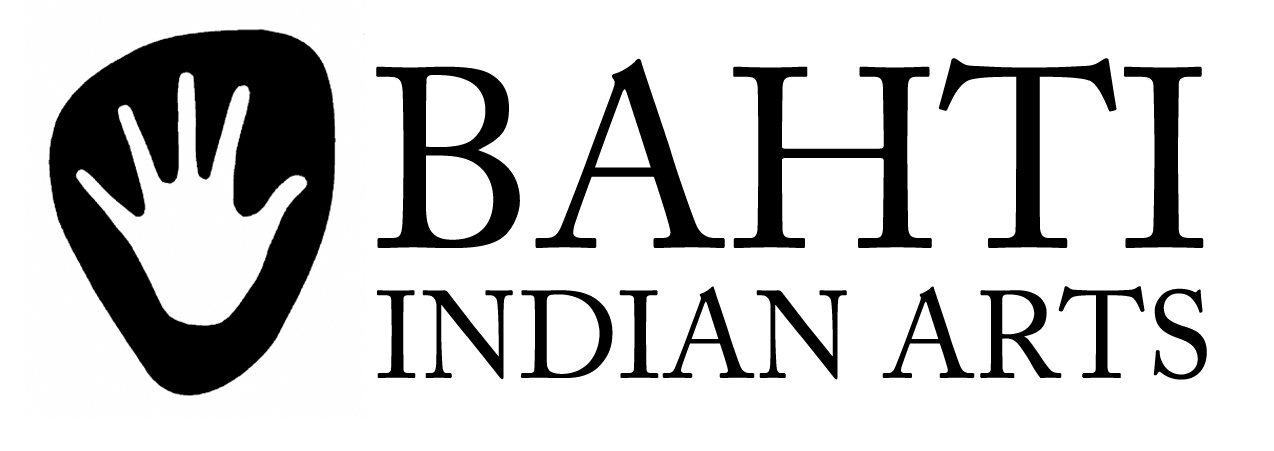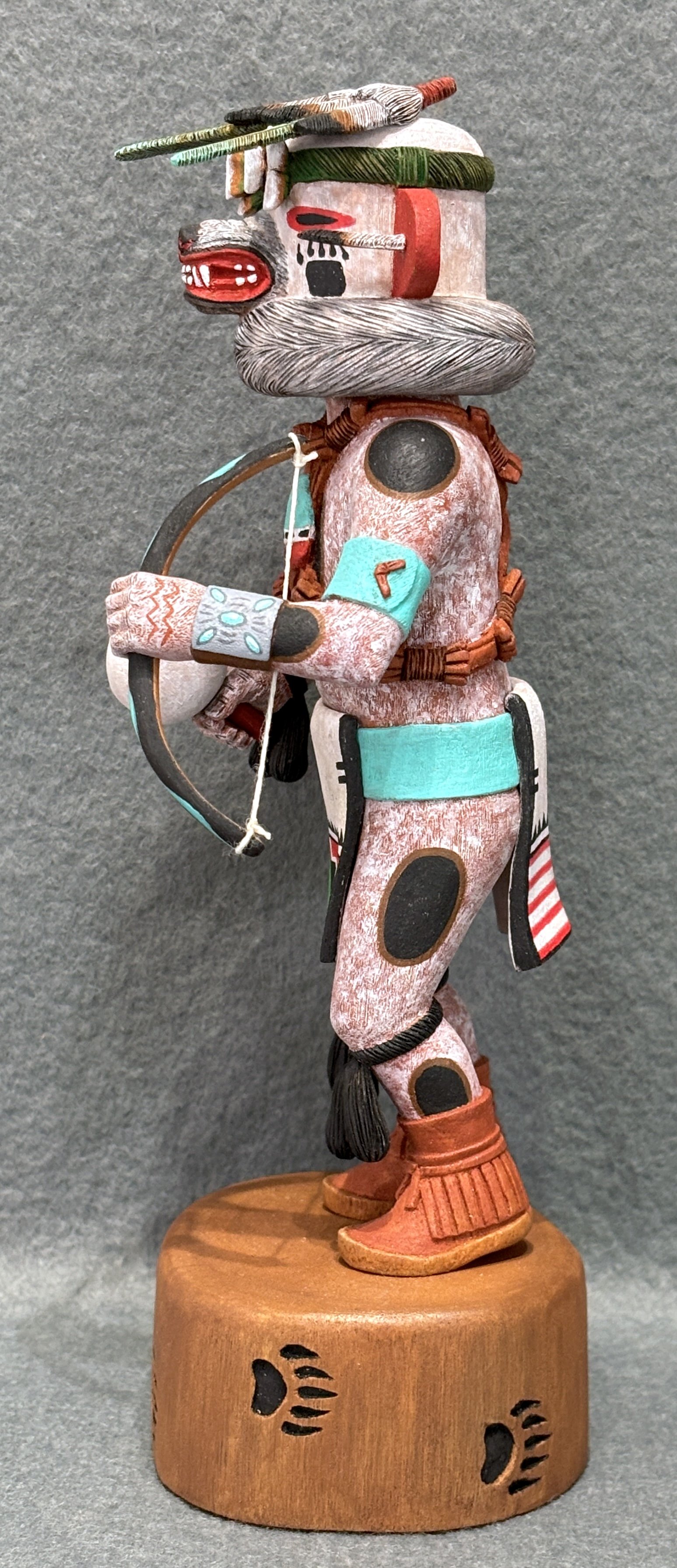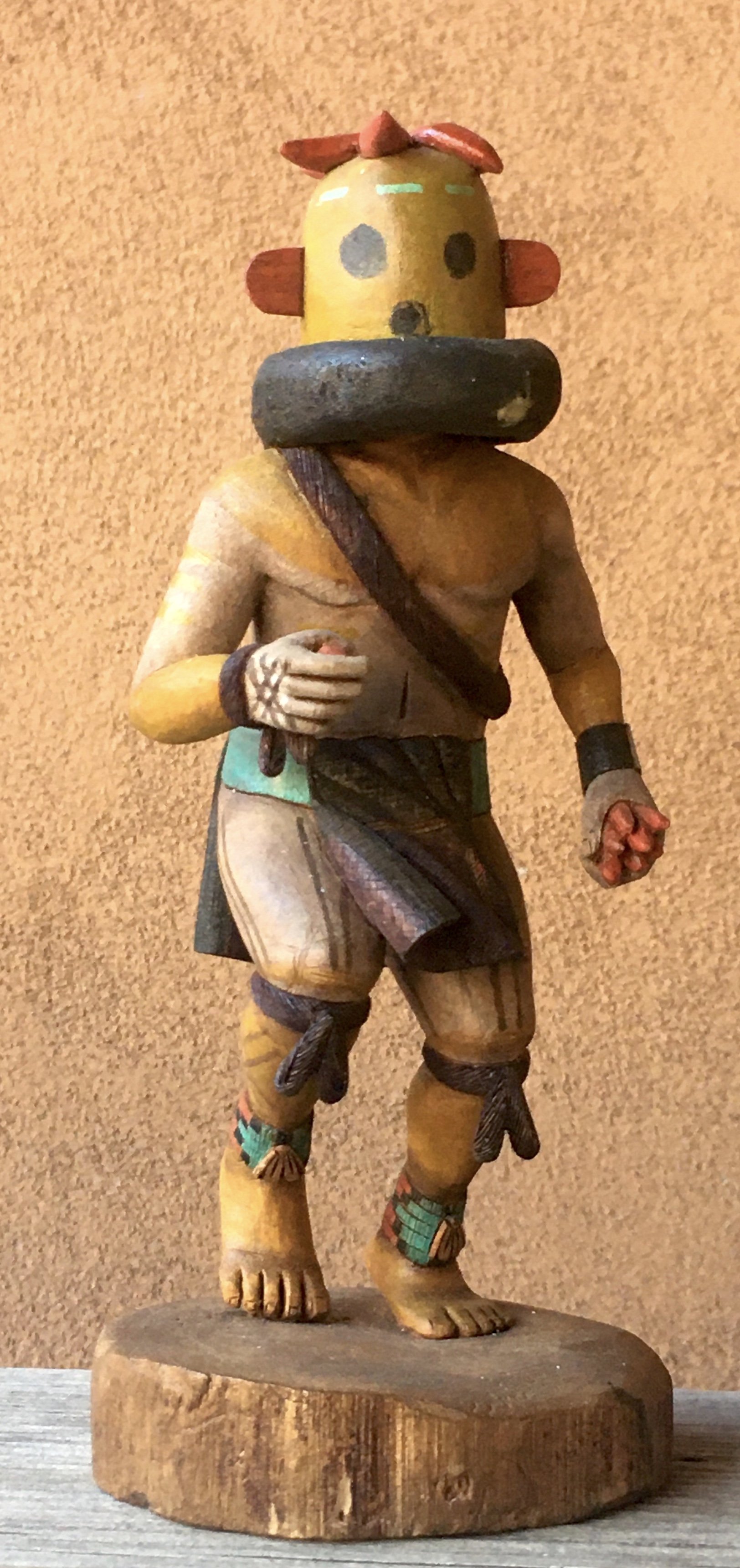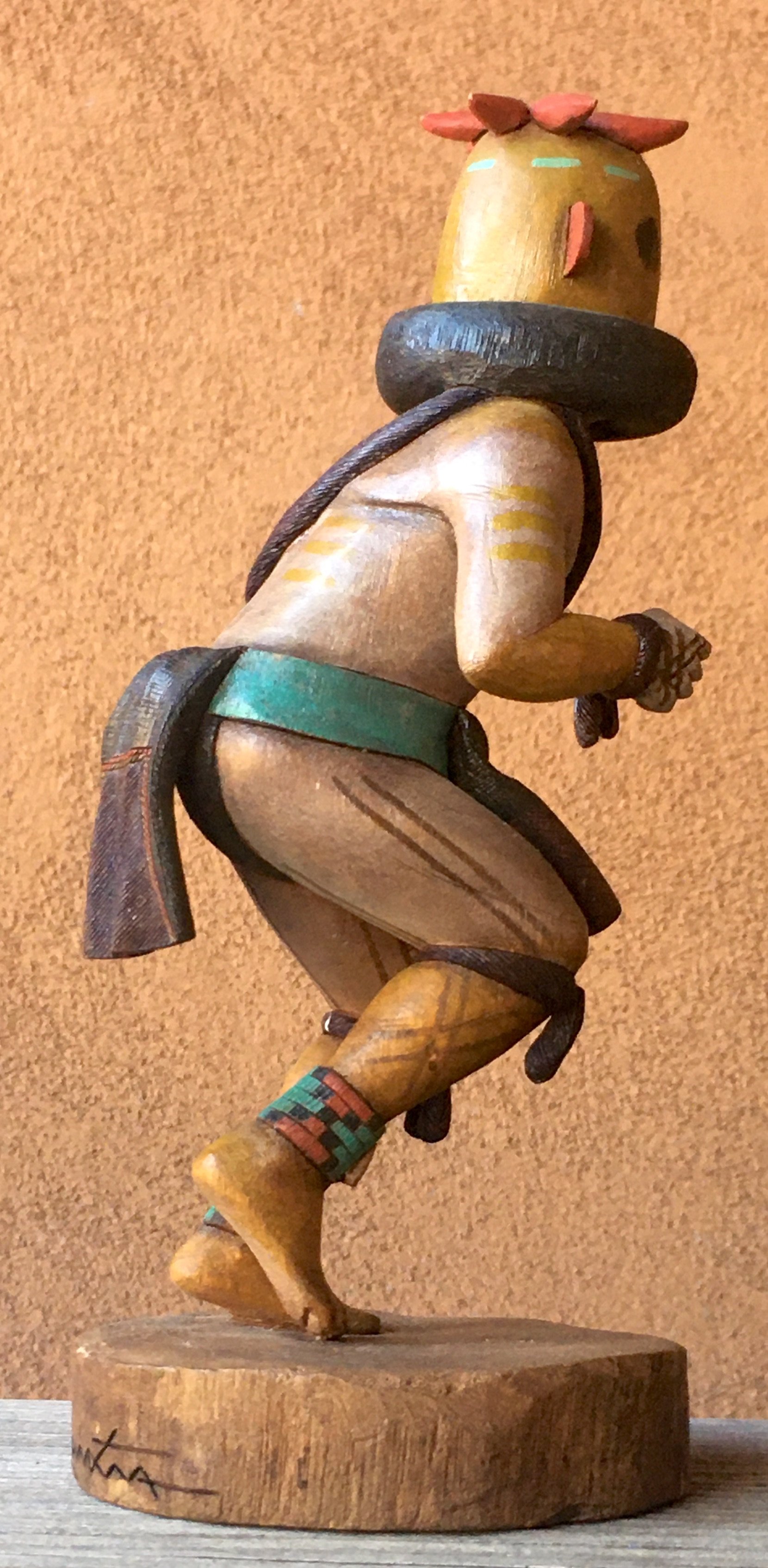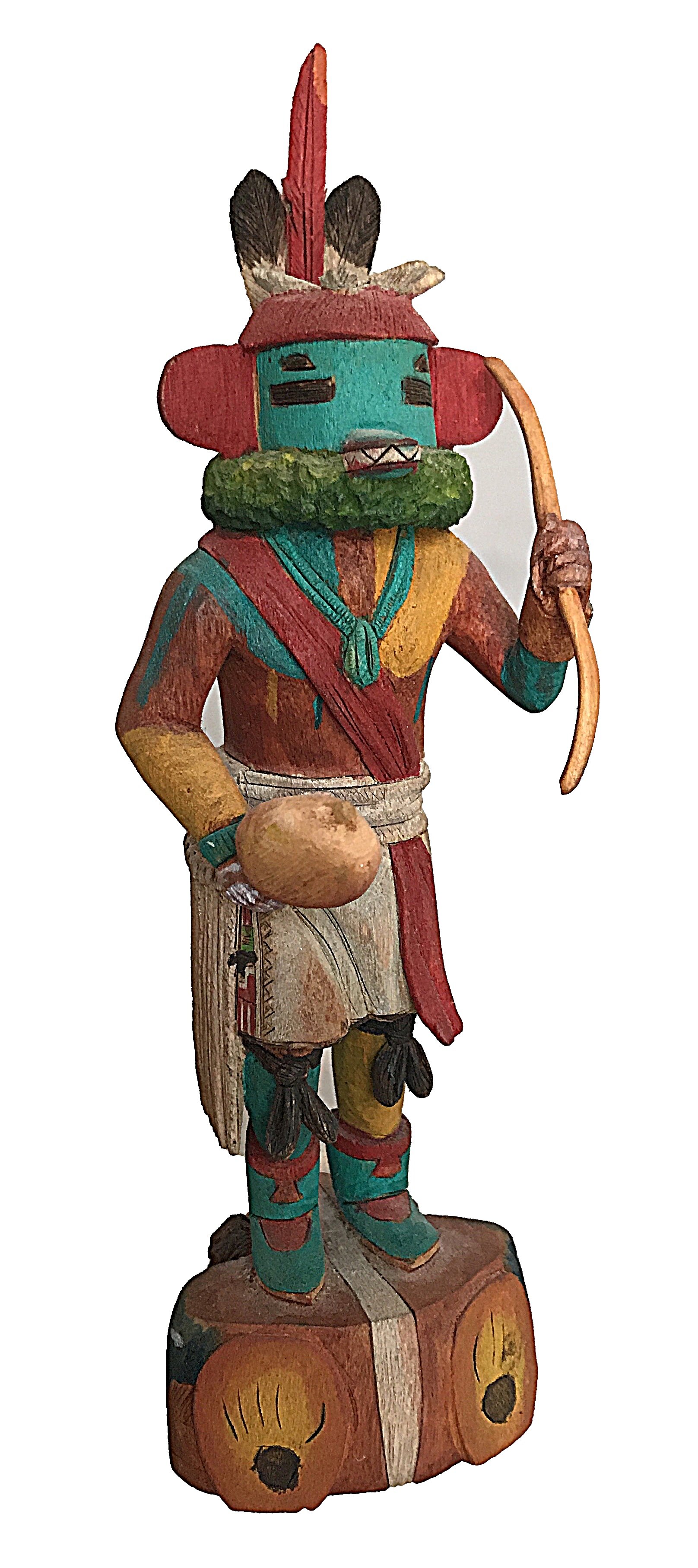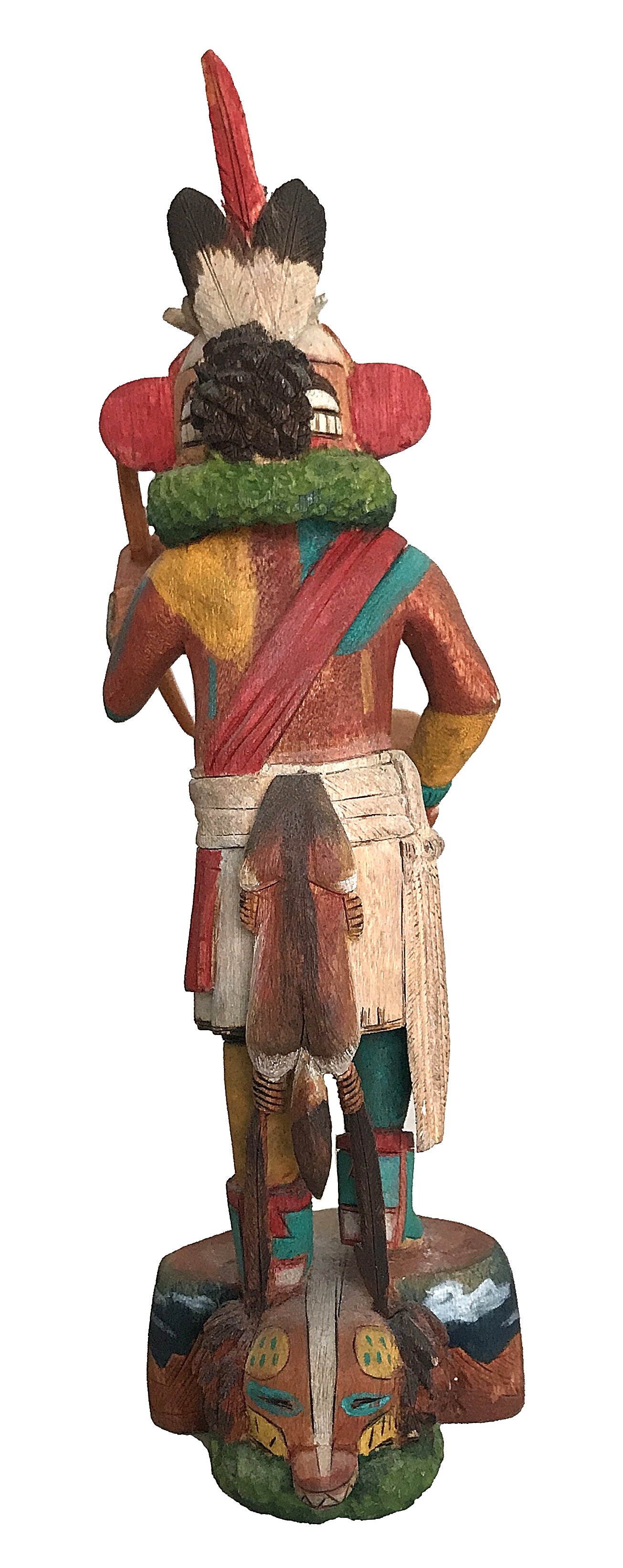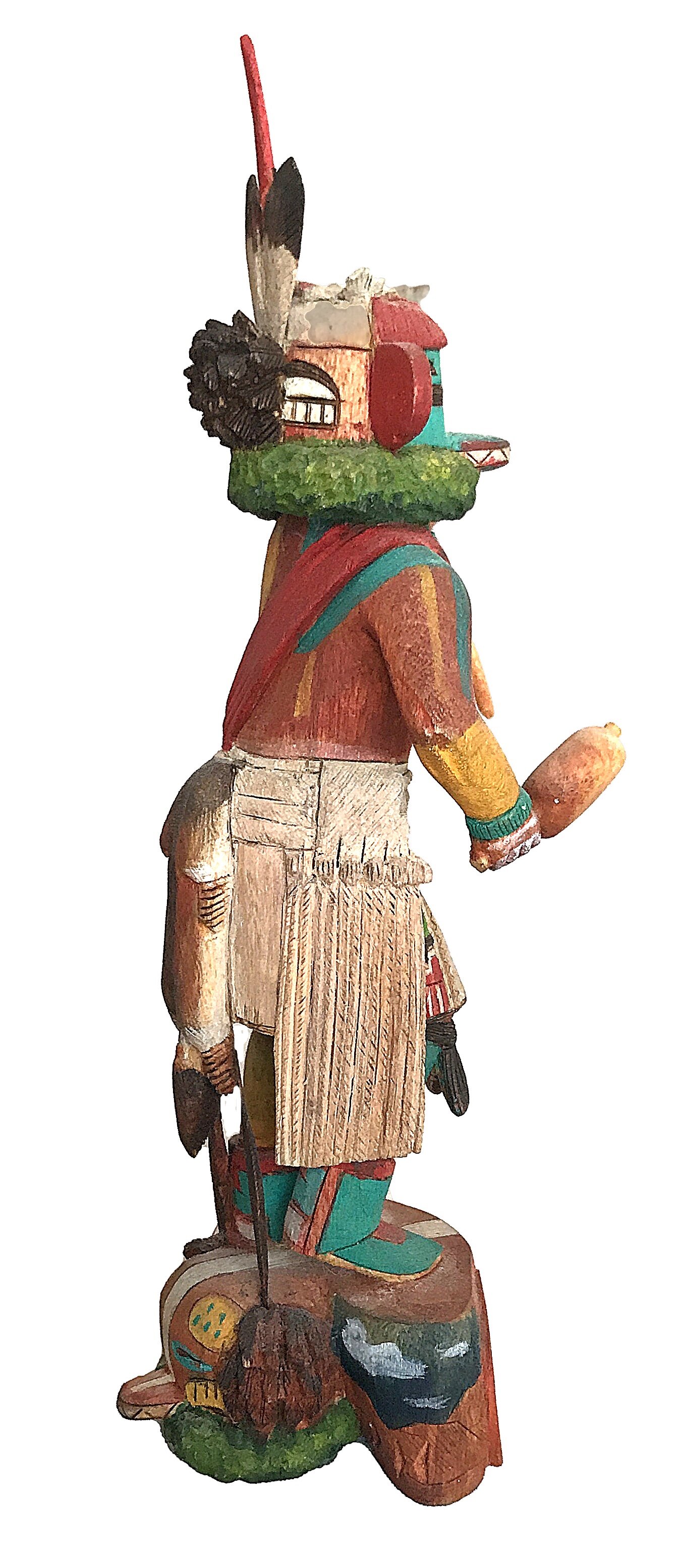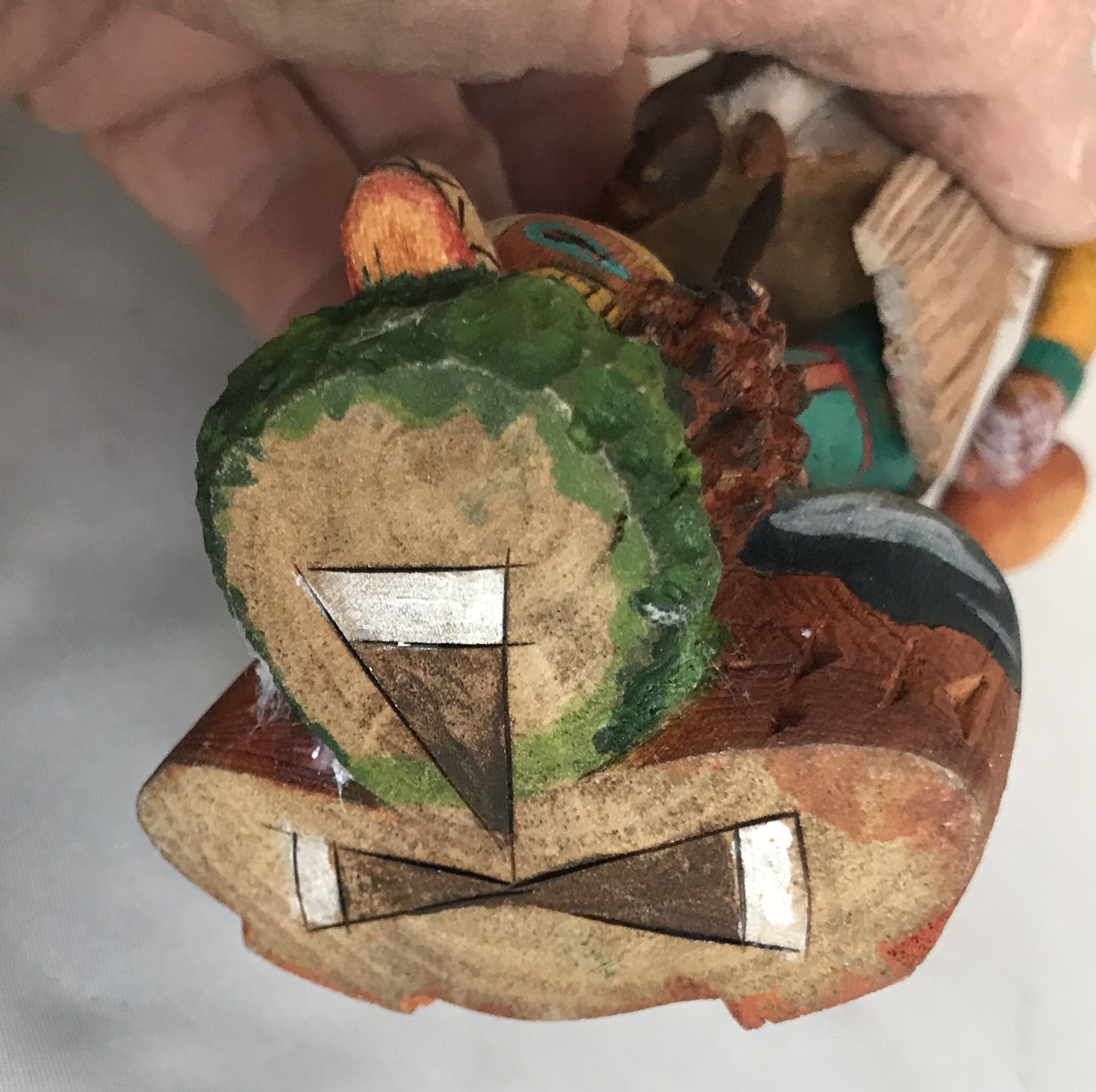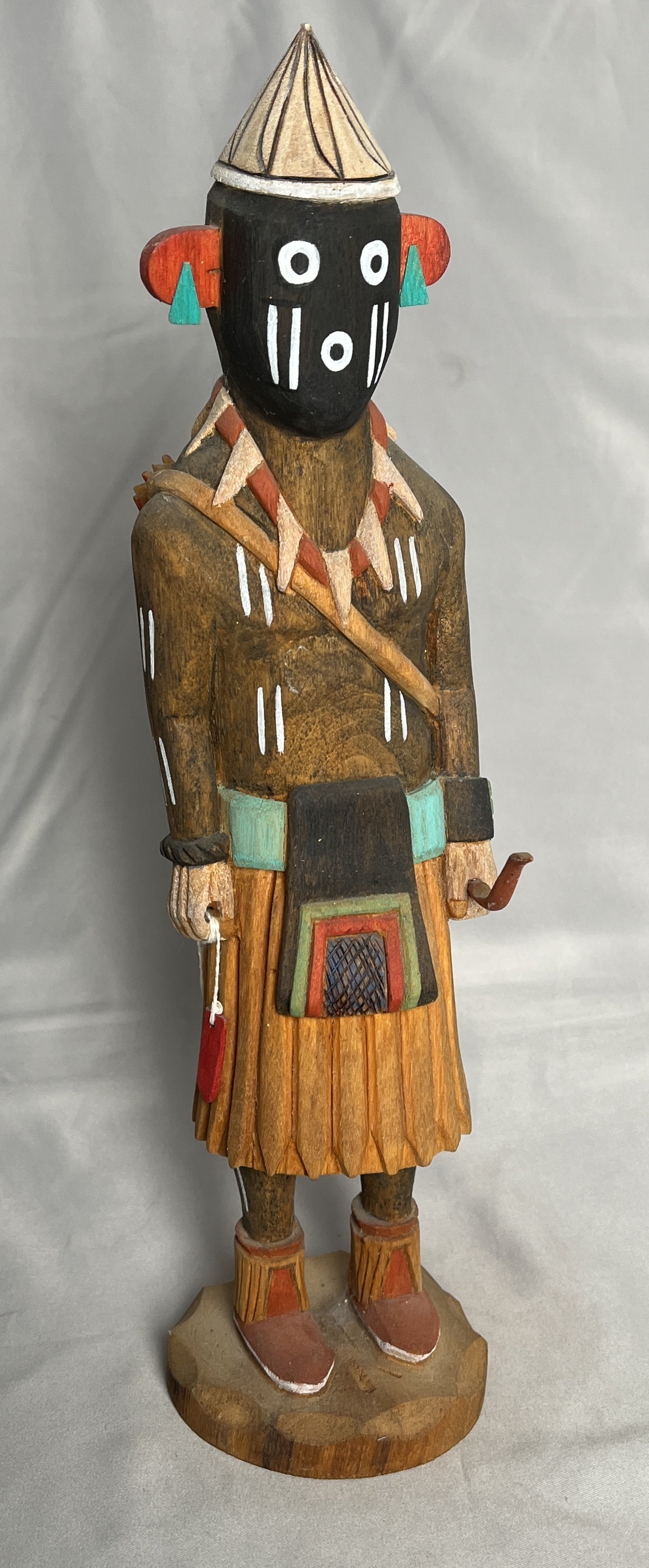This style of work began to evolve around 1970 and was accelerated when Hopis were not allowed to sell katsinas that had migratory bird feathers - not even of those birds which could be legally hunted, like ducks. While some carvers worked with grouse, pheasant and pigeon feathers, others found a receptive audience for carved wooden feathers, which were not susceptible to damage from moths and crickets. In time very highly detailed work emerged, along with the concept of 'one piece carvings' - dolls which were carved without anything being carved separately and added on. (the problem is that cottonwood root is soft and carving an arm out across the grain was structurally unsound so most "one piece" dolls will have items carved separately and then attached - like bows or protruding mouths.)
In any event, while a return to the older style carving has diminished the number of carvings working in this style, many still do (and many carve both styles).
The Qotsa Hon or White Bear katsina above was carved by Andrew Sahmie, Hopi-Tewa. It is 7 5/8 inches high including the base. $900. (SANTA FE)
A Kwaahu (Eagle) by Andrew Sahmie, Hopi-Tewa from First Mesa. This one is 4.75 inches high and $600. (SANTA FE)
A Sakwa’ahote or Blue Chasing Star katsina by Wendell Silas. It is 8 5/8 inches high and $1,275. (SANTA FE)
The Sakwahote or Blue Ho’te and the Sikyahote (Yellow Ho’te) are said by many Hopi to represent the spirit of the Plains Indians. Others associate them with shooting stars.
